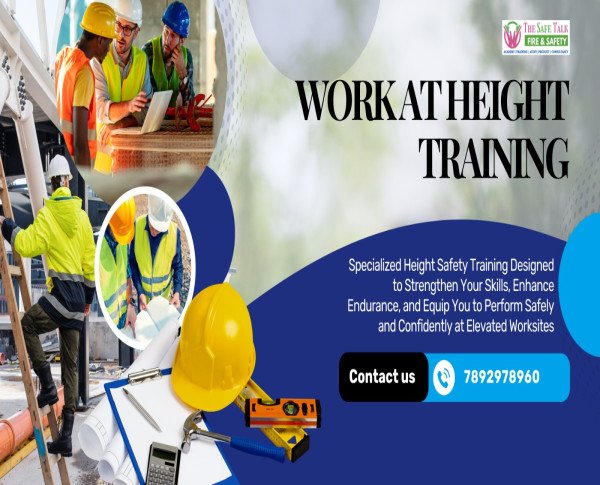The Ultimate Guide to Working at Heights Training - The Safe Talk Academy
Working at Heights Training is a critical safety program designed to equip professionals with the skills, awareness, and competence needed to operate safely in elevated environments. Whether you're on rooftops, scaffolds, ladders, or near fragile surfaces, the risk of falls and injury is significant. This training ensures you're prepared to prevent incidents—and respond effectively if the worst happens.
What Does It Cover?
Understanding the Risks
This training delves into common hazards such as unstable platforms, fragile surfaces, improper equipment use, and environmental factors. It moreover stresses the significance of hazard appraisals and planning before any significant work starts.
Legal Compliance & Competency
Participants are informed about relevant regulations—like the Work at Height Regulations 2005—and understand the concept of being a “competent person”: someone trained, experienced, and capable of recognizing and managing height-related risks.
Hierarchy of Controls & Equipment Use
The training introduces a top-down approach to fall prevention—from avoiding height work altogether, to using collective protective measures (e.g., guardrails), and finally to personal protective equipment (PPE) like harnesses, lifelines, and anchors.
Safe Equipment Handling
Participants learn how to select, review, and appropriately utilize security gear—like drop capture systems—understanding components such as drop clearance and drop figure, and recognizing that appropriate tie-off alone is not sufficient if clearance is insufficient.
Emergency & Rescue Planning
A standout focus is on post-fall rescue procedures—planning for fall clearance, rapid rescue, and preventing suspension trauma, which is often overlooked despite being potentially deadly.
Why It Matters – Key Benefits
- Heightened Awareness: Trainees learn to preempt hazards and act proactively.([Immersafety][7])
- Fewer Accidents: Hands-on, practical training fosters safer behaviors, helping reduce incidents.
- Regulatory Adherence: Organizations stay compliant, avoiding fines and penalties.
- Competent Teams: Trained individuals can effectively manage elevated tasks and emergencies.
- Real-world Preparedness: Emphasis on fall scenarios, clearance, and rescue solidifies safety in practice—not just in theory.
Working at Heights Training at The Safe Talk Academy
The Safe Talk Academy, based in Bangalore, elevates the standard of safety education with its dedicated Working at Heights courses. Highlights include:
- Certified & Accredited: Courses align with global safety practices and result in formal certification recognized by employers across industries.
- Holistic Training Approach: Subjects include vertigo testing, suspension trauma prevention, height-rescue techniques, and practical scenario-based training.
- Industry-Relevant Scope: Programs are tailored for roles in construction, telecom, maintenance, and industrial operations.
- Hands-on & Expert-Led: Instructors with real-world experience deliver immersive, practical sessions to ensure readiness and confidence.
Conclusion
**Working at Heights Training** isn't just another safety protocol—it’s a vital lifeline. By educating team members on hazard avoidance, proper equipment use, and rescue planning, organizations can significantly reduce fall risks and ensure safer workplaces. Institutions like **The Safe Talk Academy** stand out by providing comprehensive, accredited training that blends theory with hands-on practice, aligning with international safety standards and real-world challenges.



